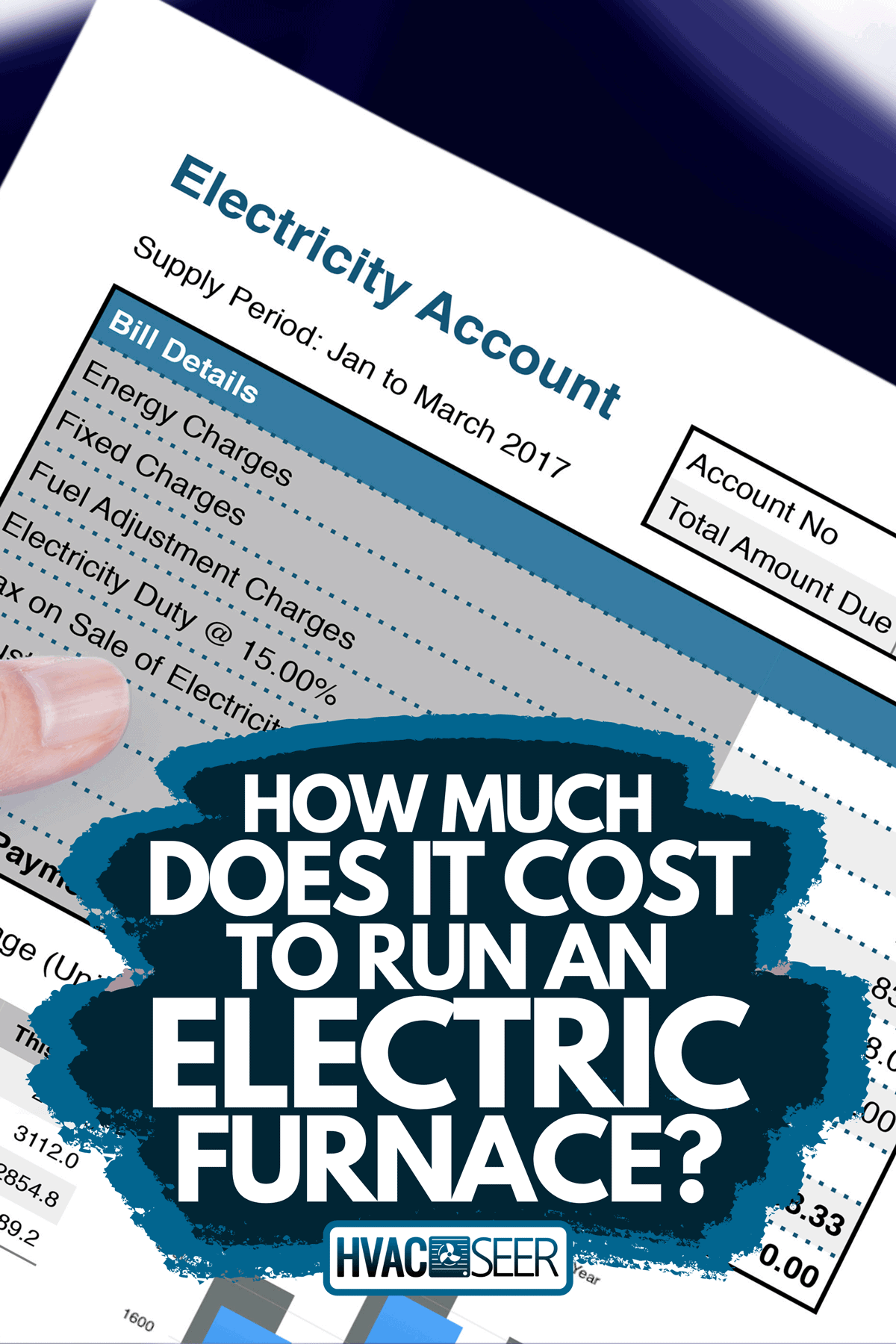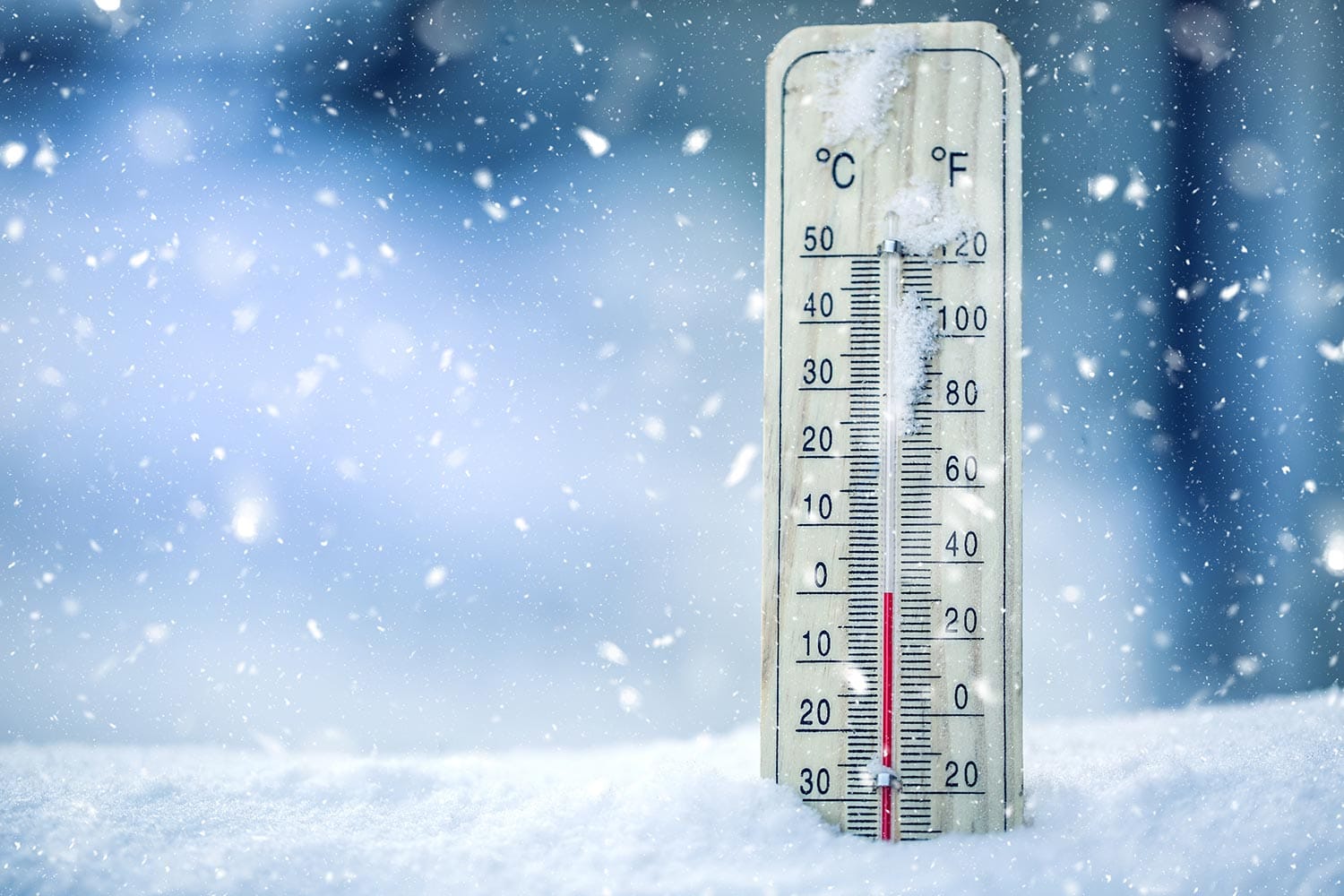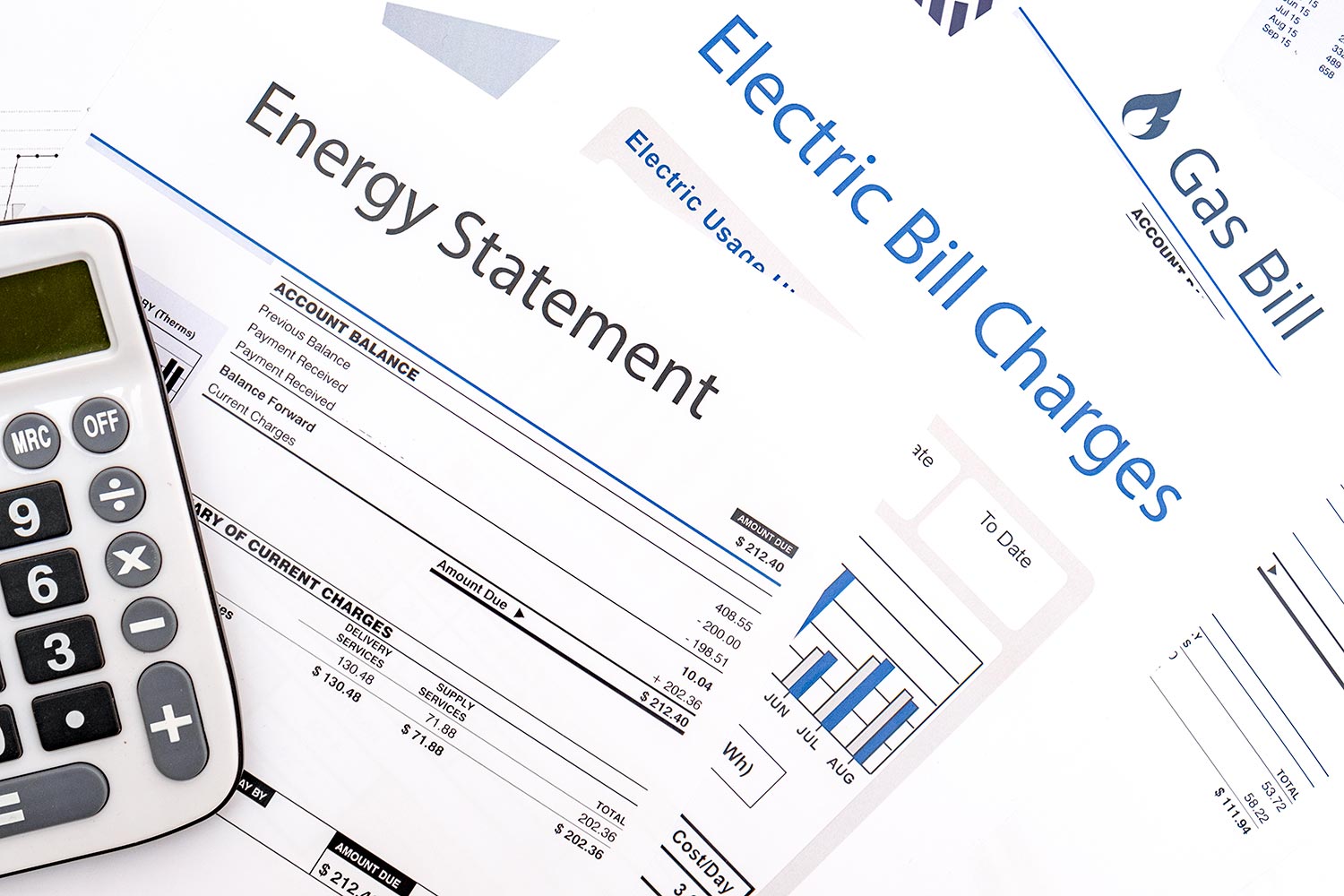As the temperatures outside are getting colder, you might find yourself using the electric furnace a lot more. At times, it can seem like you're using it for long periods. These stretches of use can be worrying because you might never know until it shows up in the form of a bill. For this reason, you might be curious to find out how much it costs to run an electric furnace. We did the research to bring you the answer.
The rate of electricity units varies from state to state. However, the average cost of 1kWh is $0.12. On average, a 1,000 square foot house requires around 45,000 BTU to maintain a comfortable temperature in a cold climate. 1kWh is 3,412 BTU, and hence 45,000 BTU equals around 13kWh. If you are running an electric heater for 7 hours a day, by using these figures, the cost would be:
- Per day = 13kWh x 7 hours x $0.12 cost per watt-hour = $11
- Per month = cost per day x 30 = $11 x 30 = $330
Now that we know how expensive it can get to run an electric furnace, you might be leaving with more concerns. For example, how does electric heating compare to that of gas? Is gas cheaper? Additionally, what are some ways you can reduce your use of the electric furnace? If you'd like to learn this and more, keep reading ahead.

How Many BTU of Heat per Square Feet?
The amount of BTU of heat per square foot is dependent upon the climate you live in. It makes sense because you wouldn't need more BTUs if you lived in a state like Florida.

To find out how many BTUs of heat you need to heat your home, you need to know two things:
- Total square footage of your home
- Climate zone
Again, it's crucial to know your climate zone to ensure you get heating throughout your home. Here's a list of the zones and their respective BTU/square foot:
- Zones 1 & 2 (hot climate): 30-35 BTU/square foot
- Zone 3 (warm climate): 35-40 BTU/square foot
- Zone 4 (moderate climate): 45 BTU/square foot
- Zone 5 (cool climate): 50 BTU/square foot
- Zone 6 (cold climate): 55 BTU/square foot
- Zone 7 (freezing climate): 60 BTU/square foot
As you can see from the list, cold zones require more BTU per square foot. If you want an accurate calculation, you'll need to multiply your home's square footage by the BTU of your zone.
Of course, it's always easier said than done. So, let's go over an example of how this would work.
Example
One square foot of area requires roughly 45 BTU to maintain a comfortable temperature in a familiar environment. So, an easy way to calculate the suitable amount of BTU for your house is by multiplying the square feet area of your home by 45.
For instance, a 1,000 square feet house with 8 feet high ceiling requires 45,000 BTU. Meanwhile, a 3,000 square feet house needs 135,000 BTU.
But what if you live in a frigid environment? Well, in that case, one square foot of area would need around 60 BTU. Hence, 60,000 BTU would be enough to warm up a 1,000 square foot house.
Is It Cheaper To Heat Your House With Gas or Electricity?

Gas has always been a cheaper option to heat your house than an electric heater. The main reason behind this is that the cost of electricity to run an electric heater for a day is more significant than gas.
Gas costs around $0.9 per therm. And one therm is 100,000 BTU.
As stated earlier, a 1,000 square foot house is around 45,000 BTU, which is equal to 0.45 therms. If you are running a 45,000 BTU gas heater for 7 hours a day, then per day cost would be:
- Gas heater cost per day = 0.45 therms x 7 hours x 0.9 = $2.8
And, gas heater cost per month:
- Gas heater cost per day x 30 = $84
Why Is Electric Heat So Expensive?

The main reason why electric heat is so expensive is the cost of electricity per unit. If electricity cost is higher, then the overall heating expense would also be higher.
In addition, electric heaters take longer than gas heaters to provide warmth. It means that you would need to run an electric heater more than a gas heater, hence the higher cost.
How Can I Reduce My Electric Heating Bill?
Now you know how expensive electric heating is, so should you switch to gas? It could be a possibility, but if you prefer electric heating, then here are 10 tips that can help you reduce your electric heating bills.
1. Inspect & Seal Up Air Leaks
Check out your windows, walls, ceilings, light fixtures, doors, switches, and outlets for any escaping air. You can also use the candle trick to detect air leaks in windows.
Simply light a candle and place it in front of the window; if the flame flickers, there is a high possibility of an air leak.
These air leaks are notorious for increasing electric heating bills. Once you detect a hole, fill it up with caulk. By filling up the leaks, you can reduce heat escape and hence reduce electricity bills.
2. Program Your Thermostat
New intelligent thermostats have made life easier for electric heater owners. With minor changes, you can reduce your electricity consumption.
For example, if you are away from home during the same time every day, then program your thermostat to turn off the heating during those hours.
The intelligent thermostat also changes its heat settings depending on the outside weather, decreasing the overall electricity usage.
3. Let the Light In
Let the sunlight in your house the old-fashioned way. Your home won’t only get warmer, but you will also get more vitamin D which is hard to come by during the winter season.
4. Close Unused Room’s Doors
We all know how important it is to turn off the lights in an unused room. But did you know that closing the doors of a new space can also help you save money on electric heating?
With the doors shut, the heat will stay in the rooms you are using, and your electric heater will not need to pump out more heat.
5. Install Thick Curtains and Shades
We advised you to let the lights in; however, cover your windows with thick curtains when the sun is down.
About 30% of home heating is lost through windows. And covering up windows with thick curtains put an insulation layer and prevent the heat from escaping.
6. Turn On the Ceiling Fan
Yes, you read it correctly; turn on the fan. But here’s a catch. Instead of running the fan on its regular setting (counterclockwise), run it clockwise.
When a fan is running clockwise, instead of spreading the air, it pushes it down. Due to this reason, the heat trapped near the ceiling would get applied across the room, and the heater would not have to pump out more heat.
7. Use a Space Heater
If you spend most of your time in one room only, use a space heater instead of turning on heating for the entire house. This way, you will be able to enjoy the warmth without letting your electric bills touch the sky.
8. Wear Warm Clothes
It is a self-explanatory solution for reducing energy bills that many people overlook.
Instead of turning up electric heat to a high heat setting, wear warmer clothes. If you don’t feel that cold, there would be no need to use a heater on high heat, and your electric bill will go down.
9. Replace the Filter
Who doesn’t hate to change the electric furnace’s heater? But it is a wise idea to do so. By just changing the filter of your electric heater, you can save money on your electric bill. But don’t forget to read the instruction manual when doing the job.
10. Check Out Your Fireplace
People still use traditional fireplaces to heat their houses. However, if you are not planning to use your fireplace this winter, make sure the damper is closed.
This simple step will prevent the heat from escaping. It is also a good idea to cover the opening of the fireplace.
How Efficient Are Older Furnaces?
The efficiency of a furnace indicates the amount of heat it provides the space. Suitable quality furnaces these days come with a 95% efficiency rating.
In other words, 5% of the heat the stove produces gets wasted. On the other hand, old furnaces—such as those made 20-25 years ago—have only a 60% efficiency rating.
Final Takeaway
Preparing for the cold is never an easy task. There is always something that will come up. In our case, the cost to run an electric furnace to keep us comfy can creep up on us if we're not too careful.
We hope you've gained an idea of what the bill at the end of the month may look like if you decide to run it for long periods.
Before you go, do you have other electric furnace concerns? If you've recently acquired one, you might want to know how long it lasts. We cover the topic in depth in our post here.
Are you worried about the noise an electric furnace can make? If you're switching from gas to electric, it might be a deal-breaker if an electric furnace operates as loudly as a gas one. You can find out more about this topic in our post here. Until next time!
